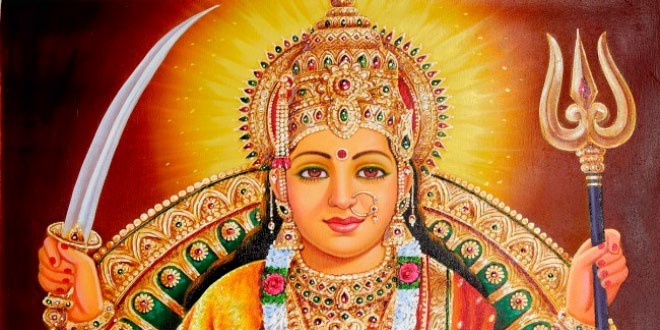Why Navratri comes twice a year? Every year the beginning of summer and the beginning of winter are two very important junctures of climatic change and solar influence. These two junctions have been chosen as the sacred opportunities for the worship of the divine power because:
- We believe that it is the divine power that provides energy for the earth to move around the sun, causing the changes in the outer nature and that this divine power must be thanked for maintaining the correct balance of the universe.
- Due to the changes in the nature, the bodies and minds of people undergo a considerable change, and hence, we worship the divine power to bestow upon all of us enough potent powers to maintain our physical and mental balance.
Navratri comes twice a year
The festival of Navratri occurs twice every year. One is called Ashwina Navratri falling in the month of Ashwina (September – October) and the other is named as Chaitra Navratri observed in the month of Chaitra (March – April). The former is the most common one popularly celebrated by the Hindus in India, while the latter is not known to many.
Several Names of Durga
The common aspect behind both these Navratris is that it is celebrated in honor of Mother Durga, who is differently called as Parvati, Shakti, Uma, Gowri, Katyayani and several other names. The feminine energy of the Supreme Godhead is said to manifest in three forms namely Durga, Lakshmi and Saraswati, the embodiment of power, wealth and wisdom. The Navratri herals, praises and worships all these three forms in myriad ways.
Mahishasura
The legend behind Navratri goes thus. Long ago, there was a demon called Mahishasura who had a buffalo’s head. He had done rigorous penance and received several boons from Lord Shiva himself. When his pride and arrogance grew, he started troubling the gods and humans. Hence he could not be subdued by anyone, Mother Durga manifested from the powers of all gods and goddesses and ended the demon’s evil ways by killing him and liberating him.
Victory of God
Navratri celebrates the victory of god over evil. Anything that is started on the final day of Vijayadashami is said to move towards success. People celebrate this festival with great devotion, religious fervor and artistic involvement. This event turns out to be a highly colorful one participated by young and the old alike. The Navratri festival has different colors throughout India.
Seasonal Changes
Talking of why we have two Navratris, note that both these schedules occur during the juncture of seasonal changes before the onset of winter and summer. During these times, the nature assumes a major change shifting from one set of colors to another. This is what is heralded by the Navratri celebration by worshiping Mother Durga who embodies the nature itself.
Same Days
During both these Navratris, the length of the day time is roughly equal to the length of the night time. During both the Navratris, the weather is ideal to rejoice and involve in festivities. The ideal kind of climate the nature presents during these times makes a perfect setting for an involved celebration enabling concentration of mind.
Chaitra Navratri
The mythological evidences state that the most popular Navratri during bygone times was the Navratri during summer namely the Chaitra Navratri. However, the other one which is popular today as the Ashwina Navratri during winter gained popularity only after Sri Rama’s time.
Ashwina Navratri
It is said that Sri Rama observed this Navratri for the first time before he went to Lanka to fight with Ravan, the demon King. This as because, while he wanted to get the blessings of Mother Durga, he did not want to wait for another six months to do the puja and then go to the war. From then onwards, the Ashwina Navratri became famous.
Importance of Durga Puja
It is believed that the blessings of Mother Durga made Sri Rama return victorious from the war. Therefore, all the people strongly feel that the puja performed during the Navratri would get the infinite blessings of Mother Durga which shall remove the troubles of people and make them succeed in their professions and material as well as spiritual life.
 Kids Portal For Parents India Kids Network
Kids Portal For Parents India Kids Network







